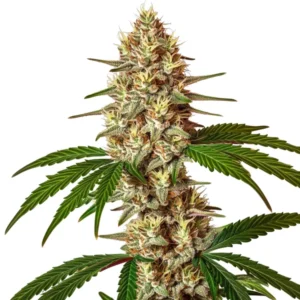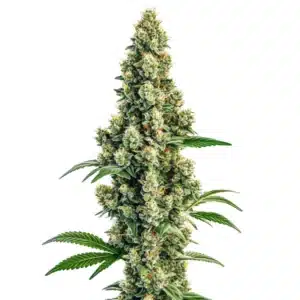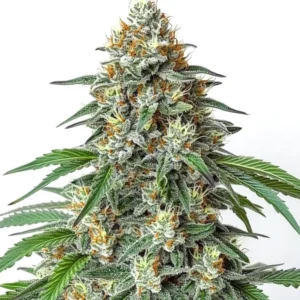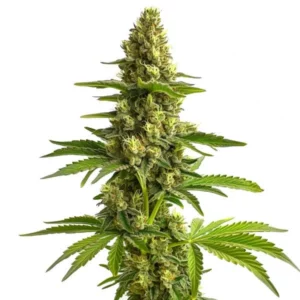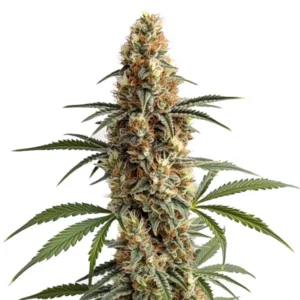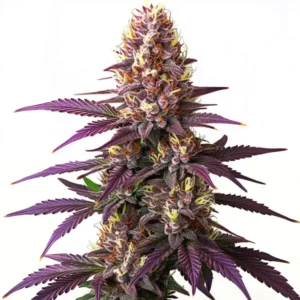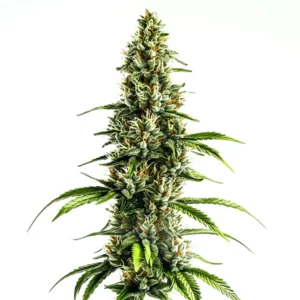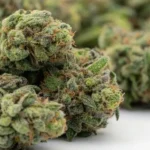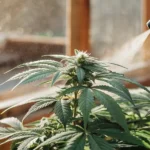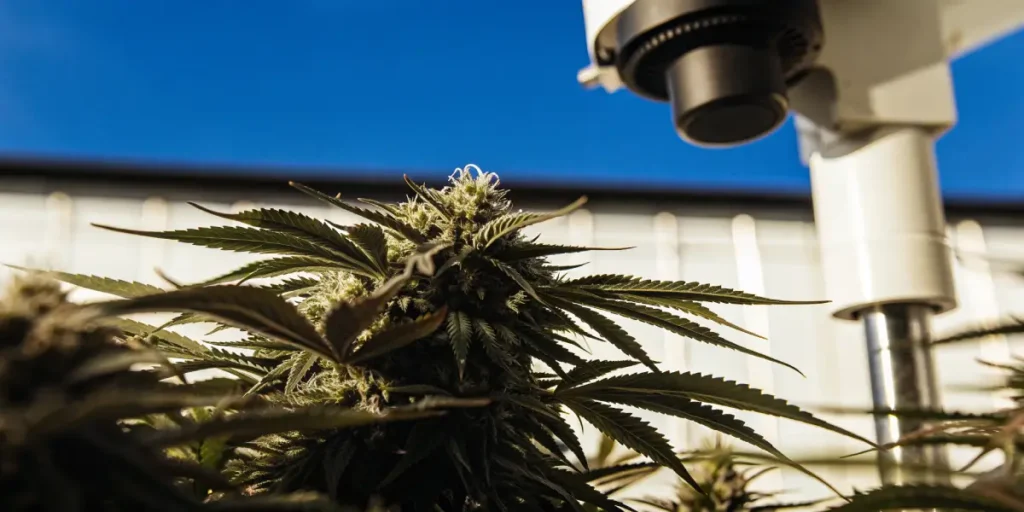
How Plant Hormones Affect Cannabis Growth
Plant hormones play a crucial part in cannabis growth. These natural chemicals guide how your plants grow, develop, and respond to their environment. Knowing how plant hormones affect cannabis growth can help you achieve better yields and healthier plants.
Hormones in plants aren’t like those in humans. They’re more like messengers that tell the plant cells what to do. For cannabis growers, knowing about these hormones is essential. It can be the difference between a thriving plant and one that’s struggling.
Recommended Strains
Let’s break down how these hormones work in cannabis. By looking at each hormone, you’ll get insights into how they impact your plants. This knowledge helps you make informed decisions when buying seeds and during cultivation.
Auxins and Cannabis Plant Growth
Auxins are the powerhouses behind your plant’s growth. They make the cells grow longer, which is crucial for the plant’s overall development. Auxins help in root growth, making them essential for young cannabis plants. They are also responsible for the plant’s response to light and gravity.
If you’re growing cannabis at home, you might notice how auxins impact cannabis plant growth by observing how the plant bends towards light. This is because auxins accumulate on the shaded side of the plant, encouraging it to grow towards the light. It’s a fascinating process that ensures your plants get the sunlight they need.
Knowing how auxins impact cannabis plant growth can also aid in training techniques like topping or low-stress training (LST). By manipulating the plant’s exposure to light, growers can influence auxin distribution, encouraging a bushier plant structure and potentially higher yields. Auxins also play a role in phototropism and gravitropism, which are key to optimal plant alignment and nutrient uptake.
Additionally, auxins can affect apical dominance, a phenomenon where the main central stem of the plant grows more vigorously than the side branches. By managing auxin levels, growers can alter this natural tendency, promoting more balanced growth across the plant. This knowledge is vital for maximizing light exposure and ensuring all parts of the cannabis plant are receiving adequate nutrients and care.
Promos & Deals
Gibberellins in Cannabis Cultivation
Gibberellins are another important hormone. They drive the plant’s stem to grow taller and help in seed germination. In cannabis cultivation, they are vital during the flowering stage. Understanding how plant hormones affect cannabis growth highlights the role of gibberellins, as they help the plant produce bigger buds and increase yield.
When cultivating strains like Gorilla Glue 4, available at Blimburn Seeds, understanding the role of gibberellins in cannabis cultivation can enhance your results. By controlling the levels of gibberellins, you can influence the plant’s growth pattern and flowering time, leading to healthier plants and better harvests.
The role of gibberellins in cannabis cultivation extends to breaking seed dormancy, making them crucial for germination. By applying gibberellins at the right time, growers can ensure a higher germination rate and more uniform seedling growth. This hormone also impacts the elongation of internodes, which can be manipulated to optimize plant height and improve light penetration.
Furthermore, gibberellins are instrumental in enhancing the plant’s ability to stretch during the vegetative phase. This can be particularly beneficial when managing plant canopy and ensuring that light reaches each part of the plant. By knowing the function of gibberellins in cannabis cultivation, growers can fine-tune their growth strategies to maximize bud development and overall plant health.
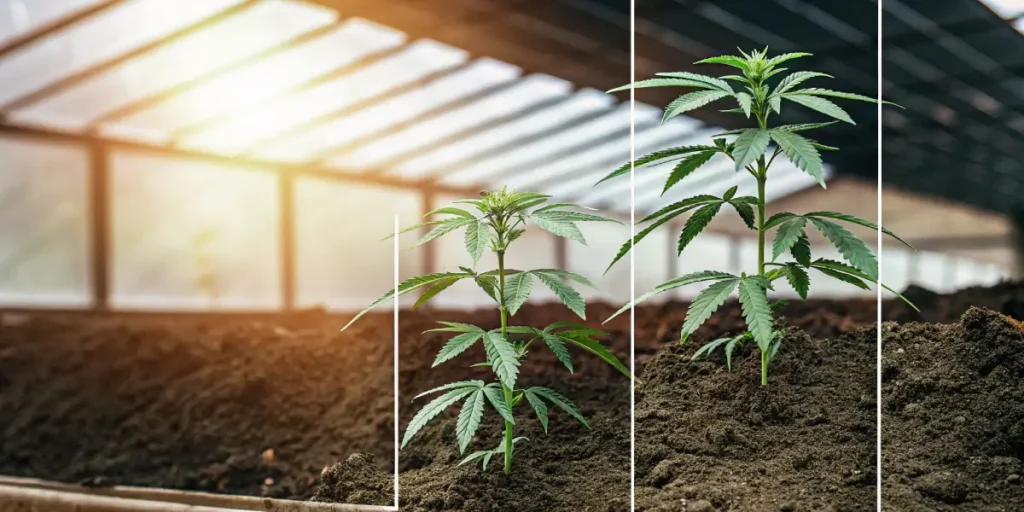
Cytokinins and Cannabis Growth Regulation
Cytokinins are responsible for cell division in plants. They work in tandem with auxins to regulate plant growth. Knowing how plant hormones affect cannabis growth highlights the role of cytokinins, as these hormones help maintain a balance in the plant’s growth processes.
For example, if you’re growing Bruce Banner 3 cannabis strain, cytokinins will help in developing a robust plant with thick stems. They also contribute to delaying leaf aging, allowing the plant to photosynthesize effectively throughout its growth cycle.
Cannabis growth regulation by cytokinins involves promoting lateral growth, which can lead to bushier plants with multiple flowering sites. This is especially important in indoor grows where space is limited, and maximizing yield is a priority. Cytokinins balance the effects of auxins, encouraging the development of side branches and enhancing the plant’s overall structure.
Moreover, cytokinins play a role in nutrient mobilization and chlorophyll production. By supporting these processes, cytokinins ensure that the plant remains healthy and vibrant throughout its life cycle. For growers, understanding how cytokinins interact with other hormones is crucial for optimizing feeding schedules and improving plant resilience against stressors.
Abscisic Acid’s Effects on Cannabis Development
Abscisic acid is often referred to as the stress hormone. It plays a crucial role in helping the plant survive adverse conditions like drought. The effects of abscisic acid on cannabis development are significant, especially in controlling water loss through the leaves.
In practice, this means that if your cannabis plants face a dry spell, abscisic acid helps them conserve water. This hormone also aids in seed dormancy, ensuring that seeds like those of Gelato, from Blimburn Seeds, only germinate under favorable conditions.
The effects of abscisic acid on cannabis development extend to closing stomata, the small openings on leaves, to reduce water loss. This mechanism is vital during water scarcity, acting as a survival strategy to maintain plant health. Growers can leverage this knowledge to better manage irrigation schedules and improve plant resilience in drought-prone areas.
Additionally, abscisic acid contributes to stress tolerance by regulating the plant’s response to temperature extremes and salinity. By knowing its role, growers can create more stable growing conditions, minimizing stress-related issues such as wilting or nutrient deficiencies. Abscisic acid also interacts with other hormones to synchronize seed dormancy and germination, showing clearly how plant hormones affect cannabis growth and overall plant resilience.
Ethylene’s Influence on Cannabis Flowering
Ethylene is a hormone that influences many aspects of plant growth, including flowering and fruiting. Its role in cannabis is crucial during the flowering stage, where it helps in the differentiation of male and female flowers.
When considering ethylene’s influence on cannabis flowering, it’s vital to manage its levels carefully. Too much ethylene can lead to premature flower drop, while the right amount can enhance the flowering process. Strains like Gelato benefit from balanced ethylene levels, ensuring a productive flowering phase.
Ethylene’s influence on cannabis flowering also includes accelerating the maturation of flowers, which can be advantageous for growers aiming for a timely harvest. By controlling ethylene levels, it’s possible to synchronize flowering times across different plants, leading to a more uniform crop. Ethylene can also impact the ripening process, ensuring that flowers reach their peak potency and flavor.
Furthermore, ethylene plays a role in stress responses, helping plants recover from physical damage or environmental stressors. This hormone can trigger defense mechanisms that enhance plant resilience, making it a valuable ally in maintaining plant health during the flowering stage. Understanding ethylene’s influence on cannabis flowering is essential for achieving high-quality yields and managing the delicate balance between growth and stress management.
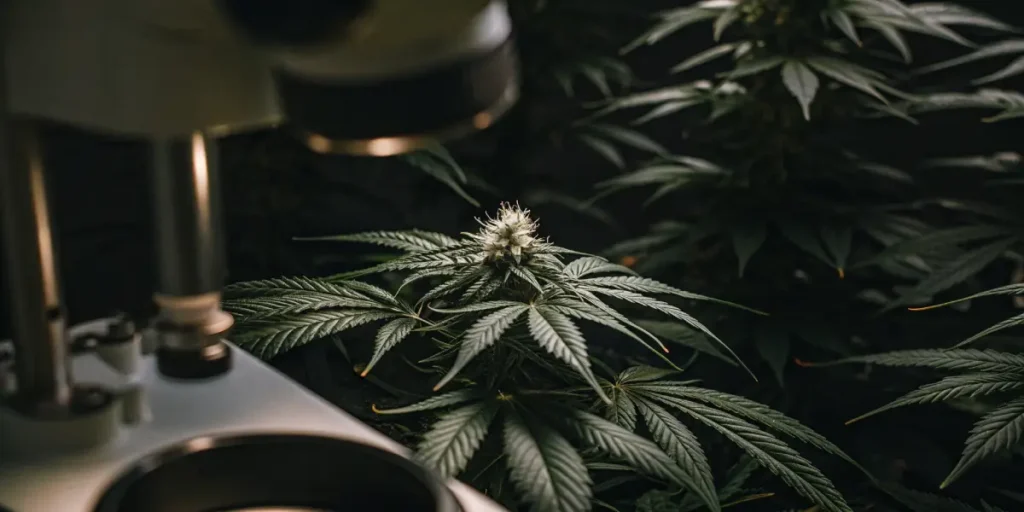
FAQs about how plant hormones affect cannabis growth
What are plant hormones?
Plant hormones are natural chemicals that control growth, development, and responses in plants. They act as messengers, sending signals to plant cells on how to behave. Each hormone has a specific role, like promoting stem growth or assisting in seed germination.
For cannabis growers, knowing plant hormones is essential. This knowledge helps in optimizing growth conditions, leading to healthier plants and higher yields. Whether you’re growing Gorilla Glue 4 or Bruce Banner 3, awareness of plant hormones can greatly enhance your cultivation success.
Besides to their primary functions, plant hormones interact with each other, creating a complex network that regulates all aspects of plant life. This interplay is crucial for maintaining homeostasis and adapting to environmental changes. By studying how plant hormones affect cannabis growth, growers can develop strategies that support plant health and productivity.
Effective manipulation of plant hormones requires a balance of art and science. Growers must consider factors such as light, temperature, and nutrition, which can all influence hormone levels. By integrating this knowledge into cultivation practices, it’s possible to fine-tune the growing environment for optimal cannabis development.
How do auxins impact cannabis plant growth?
Auxins are vital for elongating plant cells, which supports overall plant growth. In cannabis, they promote root development and ensure the plant grows towards light, a process known as phototropism.
This means that auxins help your cannabis plants to maximize their exposure to light. For home growers, manipulating light conditions can enhance auxin distribution, leading to stronger and more vigorous plants.
Beyond light response, auxins also influence root architecture, which is critical for nutrient uptake and stability. By fostering a robust root system, auxins contribute to the plant’s ability to anchor itself and efficiently absorb water and nutrients, essential for healthy cannabis growth.
Additionally, auxins can be used to facilitate cloning by promoting root initiation in cuttings. This makes them invaluable for propagating new plants and expanding cannabis gardens. Understanding how auxins impact cannabis plant growth allows growers to leverage these effects for improved plant management and yield.
What is the role of gibberellins in cannabis cultivation?
Gibberellins are crucial for stem elongation and seed germination. In cannabis, they play a vital role during the flowering stage, contributing to the development of larger buds and improved yields.
By managing gibberellin levels, growers can influence how their cannabis plants grow. This is especially helpful for strains that require precise flowering conditions, ensuring optimal plant health and productivity.
Gibberellins also play a role in enhancing the plant’s metabolism, promoting vigorous growth and improved nutrient assimilation. This can be particularly beneficial during the vegetative phase, where rapid growth is desired. By understanding the role of gibberellins in cannabis cultivation, growers can optimize plant vigor and development.
Additionally, gibberellins can be used to overcome environmental stresses, such as low temperatures or insufficient light. This makes them a valuable tool for extending the growing season or improving growth conditions in less-than-ideal environments. By strategically applying gibberellins, growers can enhance the resilience and performance of their cannabis crops.
How does abscisic acid affect cannabis plants?
Abscisic acid is a stress hormone that helps plants manage adverse conditions, like drought. In cannabis, it regulates water loss and aids seed dormancy, ensuring seeds germinate only under favorable conditions.
For growers, knowing abscisic acid’s role can be crucial during dry spells. It helps in maintaining plant health by conserving water, which is vital for sustaining growth and development in challenging environments.
Besides its role in water conservation, abscisic acid is involved in signaling pathways that activate plant defenses against pathogens. This protective mechanism is crucial for maintaining plant health and preventing disease outbreaks in cannabis crops. By managing abscisic acid levels, growers can bolster their plants’ natural defenses.
Abscisic acid also interacts with other hormones to coordinate plant responses to various stresses, ensuring a balanced approach to survival and growth. Knowing these interactions provides insights into how plant hormones affect cannabis growth, allowing for more precise management of environmental and biotic stress factors.
Why is ethylene important in cannabis flowering?
Ethylene influences flowering and fruiting in cannabis. It helps differentiate male and female flowers, which is crucial for successful pollination and seed production.
Managing ethylene levels is key to ensuring a productive flowering phase. Strains like Gelato can benefit significantly from balanced ethylene, leading to a healthy and abundant flowering period.
Ethylene also plays a role in the senescence of plant tissues, facilitating the natural aging process and preparing the plant for the end of its life cycle. This hormone can be particularly useful in accelerating the ripening process, ensuring that buds reach their desired maturity at the right time.
Moreover, ethylene is involved in stress signaling, helping plants to adapt to environmental changes or damage. By knowing ethylene’s influence on cannabis flowering, growers can better manage plant stress and optimize conditions for maximum yield and quality. This knowledge is crucial for achieving a successful harvest and maintaining the integrity of the cannabis crop.




